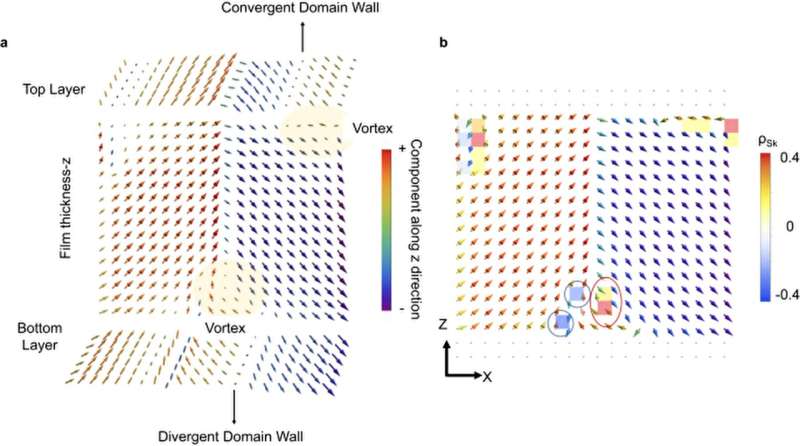This article has been reviewed according to Science X's editorial process and policies. Editors have highlighted the following attributes while ensuring the content's credibility:
fact-checked
peer-reviewed publication
trusted source
proofread
Researchers create class of tiny polarization structures called solitons

New theoretical and experimental physics research shows the first ever creation of a diverse range of fine-sized, special polarization structures known as solitons in a multiferroic material. While solitons have been previously identified in pure ferroelectrics—or materials with polarization—this range of solitons had not been shown to exist in multiferroic materials, in which magnetic spin exists in addition to polarization.
The findings were published in Nature Communications under the title, "Ferroelectric solitons crafted in epitaxial bismuth ferrite superlattices." The paper was authored by an international team of physicists, including University of Arkansas postdoctoral research associate Sukriti Mantri and research assistant professors Yousra Nahas and Sergei Prokhorenko. Nahas and Prohorenko are part of the Computational Condensed Matter Physics group led by Distinguished Professor of physics, Laurent Bellaiche, who also served as a contributing author.
"In multiferroics, there are lot a of degrees of freedom at play and competing. It is hard to get the conditions right," Mantri explained. "Our experimental collaborators at UNSW Sydney were able to do that using a special superlattice arrangement of bismuth ferrite and strontium titanate."
Mantri added that the beauty of solitons is that they have complicated and interesting polarization patterns with electrical, optical, and topological properties of their own. These properties can have applications in memory devices, sensing devices and nanoelectronics. Now that this diverse range of solitons have been demonstrated in a multiferroic material for the first time, it drastically extends the functionality of these solitons since multiferroics offer not only electric polarization but also magnetism.
In multiferroics, energy can be driven by magnetism and its interaction with external or internal fields. This means they potentially offer more pathways to interact with solitons; for example, a magnetic field can exercise control over solitons or solitons can exercise control over magnetic spin arrangements.
"This research demonstrated the importance of international collaborations with different groups that have complementary expertise," noted Bellaiche.
More information: Vivasha Govinden et al, Ferroelectric solitons crafted in epitaxial bismuth ferrite superlattices, Nature Communications (2023). DOI: 10.1038/s41467-023-39841-3
Journal information: Nature Communications
Provided by University of Arkansas




















